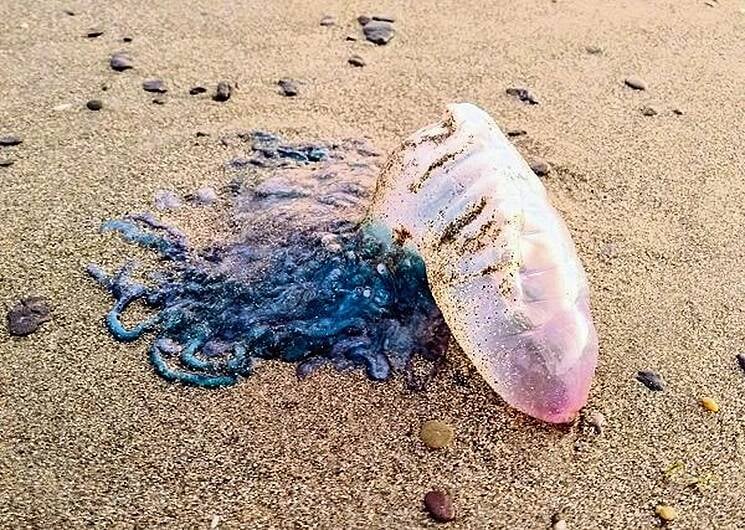A West Cork wildlife guide had warned people to exercise caution following the latest influx of the Portuguese Man O'War.
A WEST Cork wildlife guide had warned people to exercise caution following the latest influx of the Portuguese Man O’War.
Calvin Jones issued the warning after photographing the Man O’War at The Warren in Rosscarbery on Thursday, September 28th.
‘I’d taken my daughters down for a swim and spotted it on the beach – needless to say the swim was cancelled,’ said Calvin, who runs Ireland’s Wildlife tours.
He explained: ‘This is not a new phenomenon: there are records of this happening dating back to the 1960s. There have been a few reports of them washing up along the coast from Kerry through to West Cork this autumn, but nowhere near as many as we had last year, when there were literally hundreds of them turning up on beaches all along the West Cork coast.’
Calvin said that people mistakenly assume that the Portuguese Man O’War is a jellyfish. It is, in fact, a form of colonial organism that is made up of a collection of highly specialised individual animals called polyps, which perform very specific functions.
He said: ‘They are most usually found in tropical and sub-tropical waters, but have no means of propulsion, so they are at the whim of the tides and ocean currents, and when we have sustained winds from the right (or wrong, depending on how you look at it) direction, they hit the beaches of Ireland’s south coast.’
The wildlife tour operator described the Man O’War – which has a mauve tint to its inflated ‘sail’ and bright blue tentacles – as ‘fascinating and curiously beautiful creatures,’ but he warned people that the pack ‘a mighty sting.’
They disable prey with potent venom from specialised stinging cells called nematocysts in their long tentacles. Even detached particles of tentacles floating in the water can sting, as can individuals, or pieces of the tentacles, washed up on the beach.
Calvin said: ‘If you see one of these on a West Cork beach, look but don’t touch. Keep children and pets away and let the next tide take it back out to sea.
‘A sting from one of these will typically cause short-term extreme pain and whip-like welts on the skin.
‘The pain usually subsides after a few hours, but in some cases the venom can cause a severe reaction that can lead to complications and, on extremely rare occasions, even death.’









